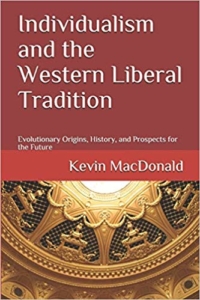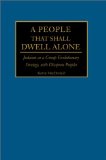“An alien race has made its dominance known.”
Cécile Tormay
When Israel is King
Jérôme and Jean Tharaud
Antelope Hill Publishing, 2024; original French edition published: 1921
7200 words
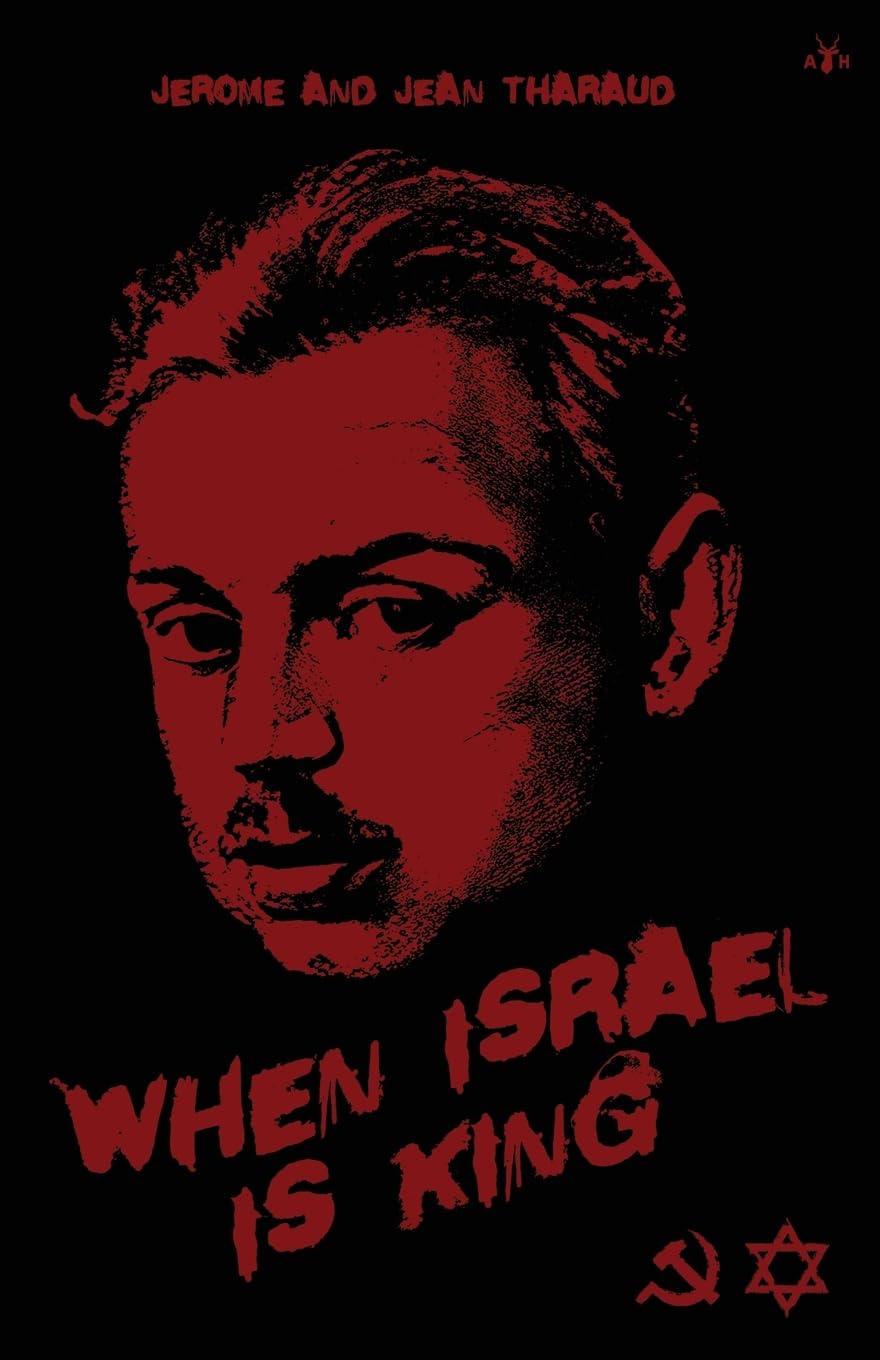
It was on the 21st of March, 1919, that a group of Bolsheviks seized control of Hungary for an infamous 133 days. That was 105 years ago, as I’m writing this in April 2024—from a safe historical distance, one might think. That might be the case, indeed, if one is concerned about Bolshevism, but the story of the Magyarországi Tanácsköztársaság (known in English as the Hungarian Soviet Republic, or literally: Republic of Councils of Hungary), led by an almost entirely Jewish group, with Béla Kun (1886–1939) at its head, is not so much about Bolshevism, or Communism, as it is about Jews—about conflicting interests and the collision of worlds during an already tense period between this intense, ambitious minority group, and the host nation. Indeed, how different groups react to tension or conflict, especially when they live in the same space, is itself a key element of this story. Given this, the lessons we can learn from the story of the Kun regime are timeless, especially since Jewish influence—sometimes even “control,” to stick with that word—over our nations remains a reality, with its conflicts and tensions.
In recent years, the relatively young American publisher, Antelope Hill Publishing, seems to have made it its mission, besides their original releases, to translate or republish historical rarities, bringing older works back into public consciousness, rescuing them from the obscurity of neglect. One recent result of this noble mission is the new edition of a French book from 1921, with its 1924 English translation reformatted—a book about one dark spot in the past of Hungary. The original title of the work was Quand Israël est roi; now translated as When Israel is King (see the publisher’s page for the book, or on Amazon). The authors of the work are Jérôme and Jean Tharaud (henceforth: Tharauds), a pair of brothers who, being familiar with Hungary at the time, documented the story of the Soviet Republic with a foreigner’s eye. They seemingly are men with integrity, and they present the story to the reader with honesty—that is, without hiding the role of Jewish influence and the multifaceted problems stemming from it.
Today, the Tharaud brothers are regarded by mainstream scholarship merely as anti-Semites or racists. An excellent example of this is provided by French historian Michel Leymarie, who, in his article in the Jewish journal Archives Juives, runs through the literary output of the French brothers, from short stories to historical material, and details how they characterized Jews negatively—whether as isolated, religious primitivists, or as metropolitan, secular activists.
Leymarie does not feel the need to refute the statements and data of the brothers; he considers it sufficient to demonstrate, with the voice of moral indignation, that the brothers dared to write negatively about Jewry: “In April 1917, the elder of the two brothers wrote to his wife: ‘The Russian Revolution is largely a Jewish revolution. No one knows the question better than we do.’ Here the theme of Judeo-Bolshevism as well as anti-Semitic hatred that is not always immediately apparent to the reader, is explicitly revealed, even before When Israel is King” (Leymarie, 2006, 92). Leymarie therefore applies a very low standard to cast moral judgment, if even such a lukewarm remark falls into the category of hatred; but perhaps this is to be expected from a Jewish journal. While the Tharaud brothers sit in the moral dock of Jewish sensibility, we can find relief in the fact that even their critics do not target them with the weapon of refutation. In light of this, it is worth exploring how that Jewish regime of Hungary, which they called the “New Jerusalem,” was perceived by them.
The work was first published in Hungarian by Cécile Tormay (1875–1937), a well-known writer on the topic herself, in her journal Napkelet (Sunrise), whose issue of February 1, 1929, in an article by Sándor Eckhardt (1929, 214) refers to it in this way:
Tharaud’s colorful and exquisitely written book (Quand Israël est roi), which also appeared on the pages of this journal (Napkelet IV.), is the only exploration of the Hungarian revolutions written with an artist’s pen, which opened the eyes of the world and shed a bright light on events only vaguely known from newspaper reports. Then came the French translation of Cécile Tormay’s book, Bujdosó könyv (Le livre proscrit 1919 [The Banned Book 1919]), which rivaled Tharaud’s in popularity and contributed greatly to the clear picture of the Hungarian revolutions that was given to the world.
Reality as Taboo
Following that, only in 2003 did the work surface in Hungarian by translator and publisher Áron Mónus, presented in a conspiratorial manner—according to the publisher’s focus at the time—under the title Jewish Rule in Hungary Based on the Protocols of the Elders of Zion, but this work of the Frenchmen can be considered generally unknown. Not so the story of Tanácsköztársaság, the Republic of Councils, which the average Hungarian is somewhat familiar with—at least within the narrative frame of “Communism is a horrible dictatorship.”
Another important aspect of all this is the general Jewish–Hungarian conflict, which was rather evident in that period—in fact, from a long-term perspective, this aspect of Jewish activism is even more important considering that, while Bolshevism today is not a serious threat, the influence of Jewry persists to this day. Thus the continuing nature of this specific ethnic conflict of which the Kun regrenders the book’s theme timely. This continuing conflict has remained a taboo, however, as it was illustrated well by activist Jews a few years ago. Commemorating the 100th anniversary of Miklós Horthy (1868–1957) becoming the regent of Hungary, László Toroczkai, leader of the Our Homeland Movement—a populist-nationalist party—on March 1, 2020, remarked in his speech:
We have still not seen Jewish self-reflection, when this or that leader of their community, whether from left-liberals, or from religious communities, would address also why the destroyers of Hungary, the leaders of the Republic of Councils, were almost entirely people of Jewish descent, and until they don’t talk about this honestly, mentioning also positive examples, like Bernát Back, until then we can’t put this period of Hungarian history to rest. So let the Jewish leaders face this, too, then let them speak about what the responsibility of leaders of Jewish origin was in the Republic of Councils in bleeding Hungary out, disarming it, destroying it! Let them be honest! They should also try to face the past before we might want to build a home together.
Upon hearing this, Hungary’s Jewry did not feel the need to practice self-reflection; rather, its influential segment, the state-funded Tett és Védelem Alapítvány (TEV; Action and Defense Foundation), modeled after the ADL in the United States, or LICRA in France, connected to the extremist Chabad Lubavitch sect, and maintaining excellent connections to the government, described it as anti-Semitism and filed a criminal complaint. The leader of the “neo-Nazi” Our Homeland, they say, “passed the exam of the anti-Semitic hate-tropes from between the two world wars excellently,” and therefore he “must be held to account.” The party leader was reported for the crime of incitement against the community for “collective stigmatization of the Jews,” although Toroczkai also mentioned a positive example, so this is baseless in terms of objectivity. But the point here is not objectivity, of course. Rather it is a message to Hungarians, that their tribe can only be mentioned positively, or as victims; they will not tolerate such criticism.
The taboo is, indeed, about Jews, not the Republic of Councils itself—it’s enough to recall the documentary, made for television, by Alajos Chrudinák and Ferenc Kubinyi: ÁVO – The Communist Party’s Terror Organization (Ávósok – A kommunista párt terrorszervezete) from 1994, a film about the State Defense Department (Államvédelmi Osztály; ÁVO) belonging to the State Security Department (Államvédelmi Hatóság; ÁVH) under the 1947–1956 Communist regime of Mátyás Rákosi (Rosenfeld), whose high number of Jewish personnel the film did not avoid mentioning. As a result, Jewish groups started a campaign to have it placed on a blacklist. They succeeded easily: the program director, Mihály L. Kocsis, referred to the Holocaust and pressure from these groups, and notified the filmmakers of the decision, as documents show. The attitude, needless to say, remains the same ever since in the country, and critique of Jews—including their role in Communism—continues to stay in the shadows (only mentionable within a philosemitic framework, as we will see later). Illustrative of this, the news portal Kuruc.info, being openly critical of Jewish influence, has to be maintained anonymously from servers in foreign locations, with both left- and right-wing governments having attempted to shut it down already multiple times for “anti-Semitism” and “Holocaust denial”—red lines drawn according to Jewish interests.
When “Israel” was Already Fighting for Power
We learn at the start of the book from the Tharauds, that from 1899, Jérôme taught French in Budapest, and therefore he was not a stranger in Hungary. This is noticeable in the work, in which the authors regularly describe places, people, and scenery, as if with familiarity, whether in the capital or rural settings. Sympathy for Hungarians is easy to detect in the text. The Frenchman later returned home, so he could visit again after many years, traveling the country, chronicling the period of the Kun regime. The Tharauds describe the impressions of the average Hungarian: “these people, who came no one knew whence, barely tolerated, without civil rights or any other protection than the goodwill of the seigneur or the good nature of the peasants, despised as vagabonds by the settled population of the country, cursed as the executioners of Christ by the Magyars, who were deeply attached to their Christian traditions, were yet able by sheer intellectual force to impose their domination on the whole rural life of the country.” (Tharauds, 2024, 22–23) This intellectual force was, as we learn, speculation: “These Jews, who were called by their coreligionists themselves ’wild Jews,’ came either straight from Galicia or arrived in Pest after having made a stay in the villages of Upper Hungary, just sufficiently long to enable them to amass a little hoard, enough to act as a nest-egg with which to make their fortunes.” (Ibid., 26)
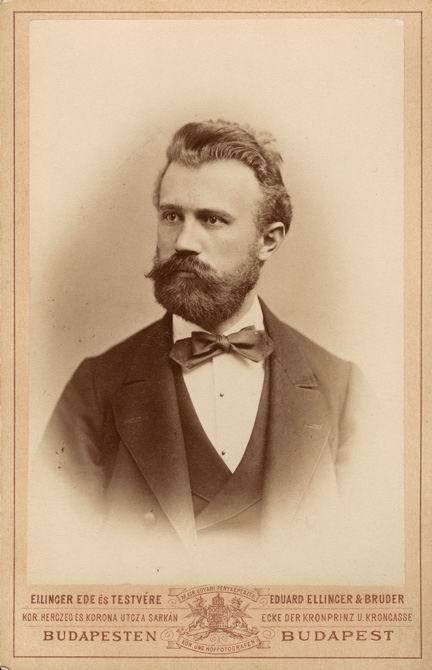 Győző Istóczy
Győző Istóczy
About this situation, bolder Hungarians had already complained about in earlier times. This was the case with Győző Istóczy (1842–1915), founder of the National Anti-Semitic Party—and editor of the 12 röpirat (12 Pamphlets) journal that analyzed Jewish influence—and he did so in the Parliament itself, even, as a representative for 24 years. He introduced himself once as the person who, on April 8, 1875, “delivered the first anti-Semitic speech, which, in a parliament, including Europe’s other parliaments, was ever heard at all” (Istóczy, 1906, 7). In this speech he drew attention to Jews gaining more and more influence: “Jewry, which enjoys confidently calling, and considering, itself the fermenting leaven of civilized society, even though they resemble what today in the botanical language one calls ‘cuscuta,’ the parasitic plant, which, not being able to exist by itself, lives off of other plants until it destroys them eventually” (Istóczy, 1904, 9). Istóczy then offers a prediction of proletarianization of Hungarians: “it can mostly remove all obstacles from its way—and this attacking caste, by the accumulation of wealth, without adequate channels of return, in its hands, constitutes the factor which, by the ‘ad absurdum’ of the principles of national economy, which are at present generally in force, and by the daily increase of the wealth imbalance in important dimensions, creates legions of the proletariat, and thus threatens to produce social and public disasters of unforeseeable results, not far in the future” (ibid.). The representative’s words were bitterly proven true by posterity, as the story of the Tharauds’ book shows. Later, on January 22, 1883, Istóczy summarizes between-group conflict:
And, on the basis of equal rights in principle, the competition between the two most powerful political elements—the Hungarian and the Jewish—was set in motion. In the 16 years of this competition, from 1867 [emancipation] to the present day, the Jewish people can already be considered the winner. Why did the Jewish element, which is much smaller in number, emerge victorious? The explanation is very simple. It is because, while we Hungarians are divided into factions, divided into perpetual struggles, the Jews are pushing forward like a compact phalanx, and like a mighty wedge they have penetrated deeper and deeper into the ever-widening gaps of our state and social organization. (Ibid., 147)
We also learn from him the figures of Jewish expansion in the early twentieth century. This is important for our analysis because from this expanding Jewry will emerge the stratum which, due partially to its cultural and political influence, will gain total power, as we shall see. Istóczy:
In a pamphlet entitled “Jewish Landowners and Tenants in Hungary,” published in 1904, Géza Petrássevich showed statistically that 27½% of the Hungarian land under cultivation was already then in Jewish hands, either as freehold or leasehold. And the pan-Jewish intelligentsia is increasingly flooding into the fields of law, medicine, engineering, etc., pushing our people more and more out of them, not to mention the merchant world, industry, financial institutions, the press, etc. They, “the damned apostles of humanism,” while not beating us to death, … deprive us of the breath of life, of light, in short, of the means of subsistence. Under such circumstances, it is no wonder that hundreds of thousands of people emigrate from Hungary to America every year, and the emigrants are replaced by “harmful elements” from Galicia, Russia, Romania, and all over the world, as new conquerors and founders of the land. This emigration to America, which has been on an enormous scale for a decade or a decade and a half, is one of the sad consequences, among other causes, of the suppression of anti-Semitic political tendencies. …
Add to this their presence in our financial institutions and the field of commerce, and it is safe to say that the Jewish element, as a political factor, weighs at least 50% heavily in the balance of Hungarian political life; that is, the Jewish element, not to mention the mixed semi-Semitic element, which leads Hungarian politics and plays the role of the battering ram, paving the way, in the interests of pan-Judaism—I say, the Jewish element as a political factor, taking into account its amazing solidarity, is now a decisive factor in Hungarian politics (Istóczy, 1906, 15–16, 18)
Those who may have laughed at the time may not have laughed ten years later—such was the weight of this Jewish presence.
Without wishing to deviate from the period of our subject, it is perhaps worth recalling that the Jewish–Hungarian conflict has a long history, since in the Golden Bull legislation of 1222 we can already find the prohibition of Jews from financial transactions, as Gyula Kristó (1990, 436) summarizes: “In the Golden Bull of 1222, dissatisfaction against Ishmaelite and Jewish tenants was also voiced, and dressed up in the guise of xenophobia: ‘Chamberlains, mint-masters, salt officers and tax-collectors shall be the nobles of the country. Ishmaelites and Jews shall not be allowed.’” This was repeated in relation to Jews and Muslims “in the 1231 renewal, when it was stated: ‘No Jews or Saracens shall be appointed to the offices of mint, salt chamber and other public offices’ (1231:31). The treaty of Bereg of 1233, which prohibited the appointment of Jews and Saracens (Ishmaelites) to the heads of mint, salt offices, taxes, other public offices, and to any leading offices, and took measures concerning the conduct of Jews and Ishmaelites towards Christians” (ibid., 437).
It is not irrelevant for our present study that already at that time, the same complaints were made about Jews and Muslims that we also have today: the “Sarraceni” were frowned upon for their misconduct with Christian women, slavery and attempts to convert others, while for the Jews, their power-seeking activities were a sore point (Zsoldos, 2022, 8, 10–11). (For a narrated case in Poland of how Jews colluded to buy up grain, selling it to Poles at higher prices, making money on nothing, harming an already destitute peasantry [among other abuses], see my earlier study: Csonthegyi, 2019; or Stauter-Halsted, 2005).
Oszkár Jászi (1875–1957), the Jewish Freemason, social scientist, and professor, who later on played some roles in both revolutionary systems, and who will return in our study with several of his insightful observations, should for now be consulted in relation to the increasing Jewish power in Hungary during his time, and earlier. In his letter, written to the editor of the paper Világ, on June 14, 1912, he opines that it is “unfair” and “not sincere” to “not notice that this arriviste Jewry is the most loyal supporter of the feudal domination” (Jászi, 1991, 200). He’s clearer later: “it is also a scientific fact, that today’s Hungarian usury-Capitalism is at least 90% in the hands of Jews. And here under usury-capitalism I’m not speaking of, generally, rural retailer-usury, but of Hungarian Capitalism’s bastard-sprouts, the big, political, shady characters and their 100% businesses”; furthermore: “[t]his is the Jewry, that, for nobility and titles and state deliveries, fills the election coffers of every government” (ibid.). According to him, “there is no social formation more bigoted than ennobled Jewish women” [ibid.]— not relevant for our present study, but we can acknowledge his insight.
The Tharauds (2024, 102) also point to the inescapable phenomenon, outlined above, when they note that “a large part of the bourgeoisie was Jewish.” Researcher Tibor Péter Nagy, looking back to a much later period, analyzing the available Jewish and non-Jewish historical archives and relevant data, concludes that “[t]he 13% figure calculated from the above data shows that Jews, who made up 5% of the country’s population, were over-represented in the national elite by a factor of more than two and a half. This cannot simply be attributed to the higher education or urbanization of Jews” (Nagy, 2012, 213, emphasis in original). The author also points out that this Jewish presence grew rapidly over time (ibid., 219), especially in opinion-forming areas of influence. This is relevant to our present topic, since we arrived at the Kun regime through the young intellectuals, and then to the later emergence of numerus clausus legislation which aimed to restrict Jewish overrepresentation.
Nagy’s ratio ultimately had an effect. For instance, Kata Bohus (2022, 246) notes the following: “After World War I, many lost their jobs because of the layoffs in the successor states’ public services and the generally much smaller need for public administration staff in territorially reduced Hungary. When these former public servants then sought employment in liberal and intellectual professions, they found that those positions were by and large occupied by Jews, which fed this class’s antisemitism.” This is confirmed by prestigious Jewish scholar, Tom Keve (2018, 14–15):
[The Jews] in 1910 provided more than half the doctors, lawyers, journalists, and veterinarians, one third of all actors and pharmacists, and one fifth of all school teachers in Budapest. While a large proportion were employed in small business activities, such as shopkeepers and clerks, tradesmen or bank tellers, a rather small, but important fraction provided the financial elite of the country. These were Jewish families, many ennobled by Franz Joseph, who had grown wealthy as industrialists, merchants, or bankers.
Alien Press
Cécile Tormay, mentioned above, has indeed contributed significantly to the history of the subject under discussion, making it inadvisable to avoid her work. Her famous–infamous book, Bujdosó könyv (official English title being An Outlaw’s Diary), is written in a somewhat documentarian style. Her diary, day after day, recounts the events of those stormy months as they unfold—from the Aster Revolution of 1918 to the rise of the Bolsheviks, and all that these regimes entailed. How much of these entries are directly from those days, and how much of it was added later from recollections, is unclear, but the gaps were probably partly filled by poetic license. In her introduction, she asks the reader for leniency, in case she’s mistaken about something: “The errors are mirrors, too: mirroring the errors of that time” (Tormay, 1939, 7). Overall, the picture she paints is a picture that we also get from historiography, with all the wisdom of posterity, when we no longer have to rely on who stumbles into what, who talks to whom, what we see or hear, but can take our time to gather data or documents. Tormay’s work, while a raw and deeply passionate snapshot of a fascinating and heartbreaking period, also draws heavily on its author’s gift for atmospheric writing. Regarding 1918, Tormay recalls the alien nature of the events vividly, from the apparently shortened English version:
And while our enemies prepared with burning patriotism for the sublime effort, underhanded peace talk was heard in Hungary, and [Mihály] Károlyi [leader of the Aster Revolutino]—through his friends—acclaimed pacifism and internationalism. The Radical press was triumphant. Not content with attacking the alliance, it attacked that which was Hungarian as well. Nothing was sacred. It threw mud at [István] Tisza’s clean name. It derided all that was precious to the nation. Base calumnies were spread about the Queen. The overthrow of authority and of traditions are the necessary preliminaries to the destruction of a nation. (Tormay, 1923, 44)
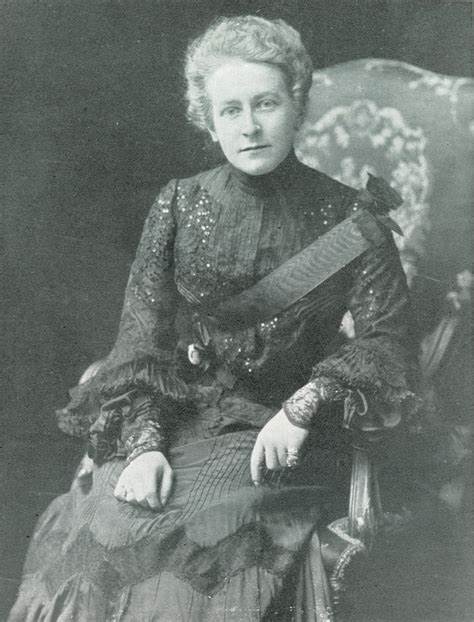 Cécile Tormay
Cécile Tormay
The Hungarian version of her text here continues with a condemnation of the press:
The radical press has created this terrible precondition with feverish haste. It accused, and it fomented suspicion and mistrust among the masses. It sowed inequality between Hungarian and Hungarian. It mocked what had been sacred to us for a thousand years. Those who could see, saw in wild pain, that it was not in the munitions factories of America, England or France, but with foreign money, here at home, in our own printing presses, in the radical press in Budapest, that the bullet that would fatally hit us, was being poured from small lead letters. (Tormay, 1939, 63)
Tormay thus makes a serious accusation about the responsibility of the domestic press. As we will see elsewhere in this study, the press was heavily Jewish at the time. The Jewish–Hungarian conflict is everywhere, and it is manifest here, too. Different aims, different needs, different characters and perspectives, and these sometimes set harsh hostilities aflame. This is also the basic thesis of my analysis. Tormay further illustrates this divide:
And one of the most important newspapers in Hungary writes of all this as if it were the accomplishment of long-cherished hopes, as if it rejoiced that “the past of a thousand years” had been buried! Not a word of sympathy, of consolation. Then something suddenly dawned on me: in this newspaper a victorious race was exulting over the fall of a defeated nation! [’race’ is in the original]! And the defeated, the insulted nation [race] was my own! … So they hated us as much as all that, they, who lived among us as if they were part of us. Why? What have we done to them? They were free, they were powerful, they fared better with us than in any other country. And yet they rejoiced that we should disappear in dishonour, in shame, in defeat. I threw the newspaper away—It was an enemy. (Tormay, 1923, 56)
Miklós Szabolcsi, in his retrospect, summarized this phenomenon as follows: “There is one sphere of intellectual life where one can observe a massive Jewish presence overtly: journalism. In this profession Jews constituted anywhere from thirty-eight to fifty percent of the membership.” What is important here is that for these Jews it was the “attractiveness and social authority of the mediating, communicative role,” i.e. its influence, that made it attractive (Szabolcsi, 2000, 136).
The Tharauds (2024, 65) also reflect on the Jewishness of the press: we learn that “I knew [Jászi] well in old days when he was following the university course.” Jászi, replacing fellow Jew Somló Bódog, was an important editor of Huszadik Század (Twentieth Century) for two decades, but the Tharauds mention an even bigger literary journal, Nyugat (West), which was edited by Ernő Osvát (Ezékiel Roth), and of course Hugó “Ignotus” Veigelsberg, also Jewish. Behind the latter journal, we can also find the influential Lajos Hatvany, about whom the Tharauds write that under his flag of modernism, the publication “had deliberately broken from all the intellectual and moral traditions which made pastoral and agricultural Hungary an ancient and noble country, to which men’s hearts attach themselves as do ours to our Provence. All the typical characters which, until yesterday, animated the works of the Magyar writers, have disappeared and been obliterated from their ephemeral literature” (ibid., 67). This “signal[ed] a perceived split between the nationalist, conservative, agricultural, Magyar countryside and the progressive, liberal, industrial, western-oriented, Jewish capital,” notes Keve (2018, 15), according to whom “[i]t would not be an exaggeration to say that Jews dominated the middle classes of the city [Budapest]” (ibid., 14). Keve remarks that “the shared background and shared problems of Jews formed a natural social bond, there was also simply the weight of numbers,” creating an alien block within the nation. This was also pointed out by the supposedly non-Jewish, Freemason Péter Ágoston (1874–1925), who, only two years later, would become a Commissar for Justice and Foreign Affairs in the Kun regime:
No matter how Jew-friendly one may be, one cannot forget that this [social] development has been unhealthy, and that its harmful effects are felt not only in the field of class division, but also in the cultural field, because a culture of foreign origin always needs a certain time to take root in a host people. In our case, the educated Jewish class is not yet rooted in the Hungarian people and its culture is not of this soil. (Ágoston, 1917, 126)
Analyzing the relationship between Jews and the left in Hungary, Philip Mendes confirms the above: “Jews constituted 70 per cent of Budapest journalists, and about half of Budapest lawyers, doctors and university students. This professional intelligentsia seems to have been particularly receptive to radical ideas. Jews were especially prominent in the communist movement. They comprised 31 of the 45 People’s Commissars, and overall about three-quarters of the 200 leading officials of the Hungarian Soviet Republic that lasted for 133 days in 1919.” (Mendes, 2014, 146–147) The author underlines that this was not specific to the Kun regime alone: “Jewish intellectuals continued to be over-represented in party membership, and five consecutive Communist Party Secretaries — Béla Kun, Jenő Landler, Zoltán Szántó, Mátyás Rákosi and Ernő Gerő — were Jewish.” (Ibid.) Between the two world wars, at least half of the party’s leaders were Jews, many Jews expected the party to protect them against “fascism” after the Second World War (i.e., they had Jewish motives), and their proportion of all party members was “far greater” than that of Hungarian society in general (ibid.).
Zoltán Bosnyák (1905–1952), a prominent researcher of Jews, provides detailed information on this topic in his study:
The census of 1930 found 1,515 journalists and editors in the whole of Torn-Hungary, of whom 480 were Jewish, which is to say, 31.7%, as already shown above. It is interesting to note that of the 480 Jewish journalists (not including the baptized), no less than 317, and excluding converts, about 300, that is, 62.5%, worked for the big newspapers in Budapest. The same can be said of only 271, or 26%, of the 1,035 non-Jewish journalists. We would like to draw the attention of our readers to the important fact that while the representation of Jews in the journalistic society of the whole country is only [?] 31.7%, the representation of Jews in the major newspapers in Budapest is 50–90%. (Bosnyák, 1937, 136)
Bosnyák does not fail to speak with his usual clarity when it comes to responsibility:
The greatest crime of this Jewish journalism in Budapest, for which it has still not been punished, was the deliberate and planned preparation of the 1918 scum-revolution. The destructive seeds of rebellion, treachery, disloyalty, disobedience of discipline, and dereliction of duty were sown by this press, both at the front and behind the front, openly or hidden between the lines. As an opponent, it was more dangerous than the other one we faced in the trenches, gun in hand. This opponent attacked us from within, and with spiritual weapons that poisoned our souls, paralyzed our wills and numbed our faith, against which hand grenades or machine guns were no match.
Two decades later, this press is still here today, still directing public opinion, judging the living and the dead, and adapting to changed circumstances, doing the same things it did twenty years ago. (Ibid., 132)
From Galileo to the Bolsheviks
The Tharauds had to work with understandable limitations at the time. As a consequence, their book is sometimes not very detailed. For example, we meet Ottó Korvin only on page 111, when he is already under arrest, visited by fellow Jews Kun and Kunfi. But Korvin’s involvement deserves more attention, as an important character, for he represents the psychologically intense, intelligent, strategist Jew—the subversive, the inciter. The Tharauds (2024, 124) later return to him, although at this time as “Otto Klein, who had changed his name for that of Corvin,” which is to say, Ottó Korvin—but yes, Klein originally. Korvin’s activism, which led to him getting arrested, leads us to another aspect of Jewish networking: that of the Galileo Circle (Galilei Kör) movement, with which he had a close relationship, and which played an important role in both the Aster Revolution, and the Kun regime. The Tharauds ponder “[f]rom whence did he come, this little hunch-backed, scrofulous Jew … From what underworld had he emerged into the light? No one at Budapest has ever been able to enlighten me on this matter” (ibid., 124–125). It is true that he was relatively obscure for outsiders at the time, but we’ve learned about him and his role since then. Had the Tharauds known about his background, the Circle would have surely made an appearance in their work. The story of the Galileists—as they were called—illuminates to us rather well how activist Jews are, to quote Kevin MacDonald, indeed flexible strategizers, as they wave the flag of progress and equality (in this case), using literature and poetry, but simultaneously contribute greatly to the construction of a murderous dictatorship. Whether propagating psychoanalysis or working underground with Soviet agents to destabilize Hungary for a revolution in those devastating and tense years, they found ways to agitate. A significant amount of details came to light about their activities only later, while we remember that the French brothers worked on this book shortly after the events of 1919.
The Galileo Circle was an association of atheist students who mostly called themselves progressive between 1908 and 1919. Mainstream historiography portrays them as open-minded liberals, opponents of dogmatism, autocracy, and militarism, but as we shall see, this image is quite inaccurate. When Jews like Bódog Somló, Róbert Braun, Oszkár Jászi and Gyula Pikler, who were trying to transform Hungarian society, founded the Hungarian Social Science Society in 1901, together with its associated journal, Világ (World), they helped to highlight the new “progressive” and “civic radical” line of sociology in Hungary, and then the Galileo Circle, a grouping of young people, was organised mainly around Pikler, but Ervin Szabó, also a Jew, was another prominent figure.
Historian Péter Csunderlik (2017, 143) points out: “Mátyás Rákosi, who was sentenced to prison under Horthy’s regime, also referred to the ‘children of poor Jews who went to university’ as a distinctive group of the Galileo Circle.” It is worth paying attention to Rákosi’s insight, because he was the secretary of the Circle at the time, thus an insider. In the group—which was also mocked by calling it the Galician Circle—Csunderlik’s presentation also shows a heavy over-representation of Jews. In September 1918, none other than Tibor Szamuely (1890–1919), who would later play a key role under Kun, wrote about the Galileists (whom he praises): “From the court-martial trials, the picture of the movement, lurking underground, fighting against all violence, which is beginning and preparing the revolution in Hungary, is becoming more and more clear. … The vanguard of Bolshevism in Hungary is these new men who are now lining up before the courts-martial…” (quoted in Simor, 1976, 24). Korvin’s role was important also according to other key figures from that time: “The indispensability of his activity was constantly felt by the proletariat in Hungary, without it becoming known and intimated to the masses,” recalled György (Georg) Lukács-Löwinger, who respected the man (quoted in ibid., 41). Indeed, the Galileists were active in helping the Bolsheviks gain power. A. G. Yustus (wife of Soviet agent Vladimir Bogdanovich Yustus, active in Hungary at the time), recalled an instance of their activism on March 11, 1958:
We found a connection to the Hungarian revolutionaries, the Galileo Circle, which distanced itself from the Mensheviks. This group included Ilona Duczyńska, Sugár (a chemical engineer), Ottó Korvin, Pál Gajdi, Csillag, the Blum couple (she a doctor, he a lawyer), and Comrade Svartyin. We organized an underground printing press in our apartment, where we printed leaflets with appeals to Hungarian and Russian soldiers.
In January 1918, the police arrested comrades Duczyńska and Sugár from the Galileo Circle, where they found printing material for the printing press. These documents were given to them by Comrade [Vladimir Alexandrovich] Urasov. (Quoted in Chishova & Józsa, 1973, 264)
It may be telling that, although one of those mentioned, Ilona Duczyńska, was not herself Jewish, her husband, Tivadar Sugár, was, as was her other husband, Károly Polányi. Urasov was a pro-Lenin agent in Moscow who aided and abetted the sabotage operations of the Galileists and was an organizer of Kun’s Communist Party of Hungary and the Vörös Ujság (Red Newspaper), he was also involved in the Lenin Boys, the terror group of Kun’s regime. Such were the people with whom these “free-thinking” and “anti-militarist,” enlightened people worked to help the Bolshevik terror unfold.
It is not surprising, then, that many Galileist Jews later took an active, sometimes leading, role, in the Soviet Republic: Ottó Korvin, József Pogány, György Lukács, Zsigmond Kunfi, Tivadar Sugár, Árpád Haász, or later Communist rulers such as Rákosi or József Révai, but the interconnections between “progressive” civic radicals, Galileists, and Bolsheviks, are so diverse that it is perhaps not worthwhile to produce a too long list of names here.
Embodying the subversive Jewish tendencies dominant at the time, Jenő Varga-Weisz should be singled out here as an illustration, since he was a member of both the Galileo Circle and the Hungarian Psychoanalytical Association, then later became the Commissar for Finance of the Soviet Republic. Csunderlik (2016, p. 2) notes in connection with the above: “The Galilei Circle did indeed produce a number of Communist Commissars, deputy Commissars and Commissariat functionaries, and two of the four assassination attempts against István Tisza were made by Galileists.” The author points out that “both among the civic radical intellectuals and among the Galileists, those of Jewish origin were strongly over-represented” (ibid, 4).
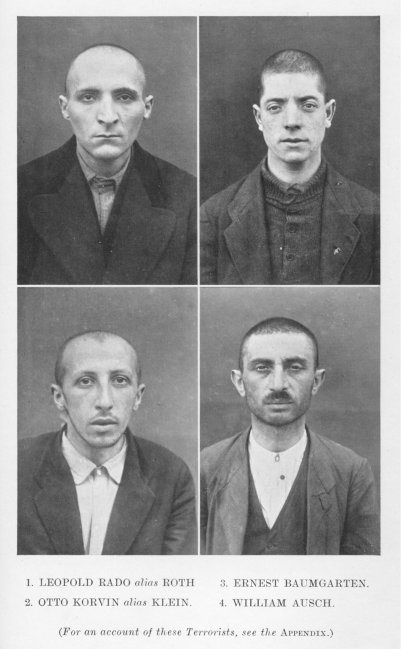
The “alien race” – some of those responsible for the Bolshevik terror, with Ottó Korvin among them (source: Tormay, 1923)
Already at that time, the journalist Ferenc Kemény (1919, 6) said of Bolshevik propaganda that “[o]nly the young ’radical intellectuals,’ the small group of the Galileo Circle—rotten by free-thinking clichés—greedily absorbed the teachings of Russian Communism, and from their ranks came the intellectual leaders and bureaucratic executors of Hungarian Bolshevism.”
The radicalism of the Galileists is worth underlining, because the group, sometimes presented in an almost romantic cloud of vapor, not only helped to bring bloody terror to the Hungarian people, but some of their members were inclined to kill, as we saw above with the assassination attempts on Prime Minister István Tisza (1861–1918), where it is worth pointing out that, in addition to Duczyńska (one of those who attempted, aided by Ervin Szabó), the Jew János Lékai was aided in this by, for example, Ottó Korvin, who himself planned to shoot Tisza with a revolver: he was waiting for him, but there was no suitable opportunity. Later, János Lékai, who had pulmonary disease, awaiting death, agreed to do the deed, so Korvin instructed him on how to use the gun and helped him get close to Tisza, but the gun failed (Simor, 1976, 31). Korvin’s activism aimed not only to transform Hungary politically, but also to change the character of the Hungarian people, as his close friend Klára Gellért Soósné (1968) wrote: “we must change the institutions—and the people.” Their program was, therefore, set.
Despite all this, mainstream historiography does not hesitate to glorify the Galileo Circle, as Péter Csuderlik himself does, portraying them as a group free of prejudice and fighting against all kinds of dogma, although their principles were apparently only applicable in the context of traditional Hungarian values, because they not only did not fight against Bolshevik dogmatism or militarism, they, in fact, helped it. Regardless of this, or perhaps precisely because of it, Csunderlik (2016, 14) presents them as one of the “most valuable Hungarian student associations.” (We’ll return to this young historian when it comes to downplaying Jewish responsibility.)
In light of the above, it is not surprising that the Tharaud brothers (2024, 26.) also noticed this kind of block-like networking of Jews: “The Jews, moreover, are so accustomed to living in close proximity to each other that even in prosperous times, even when they are free to live wherever they like, they gather where they feel each other’s elbows pressed into their sides and breathe in their own particular atmosphere.”
The fact that there is such a serious degree of overlap between civic radicals and Bolsheviks (especially in the case of leading characters) does not allow the honest researcher to regard them, like the Galileists, as genuine “progressives,” since it is their actions, not their poetic slogans, which must provide the basis for judgment. In the 1910s, Europe, including Hungary, was threatened not by “fascism,” or a “far-right“ dictatorship, but by the Bolshevism that was growing, with its revolutionary agitation in several countries. One would expect a sincere “progressive” movement against dogma and militarism to declare war on this militant manifestation of the new dogmatism, but no anti-Bolshevik wing of any kind emerged in their circles, let alone outright opposition. All this makes sense only if we accept, that in these movements it was the Jewish element that dominated, and that a Jewish goal, rather than any principle, was the decisive one—the goal being the overthrow of the traditional Hungarian (or elsewhere: Russian, German, etc.) system, and the establishment of a system in which the particular tastes of Jews, their character and needs—needs that clashed with those of the Hungarians—could be expressed with greater freedom, or in which they could gain more power. (The whys and hows of all this will be discussed in detail later on.) The same applies to the psychoanalytic movement, in which, although Sigmund Freud (1856–1939) or Sándor Ferenczi (1873–1933) were not Bolsheviks, they did not fight them either (Ferenczi accepted his professorship from the Kun regime), and in fact some psychoanalysts were rather important participants in the Bolshevik power structure. According to Oszkár Jászi (again), psychoanalysis was “the idol of Communist youth” (quoted in Erős, 2001, 65). It was not the Bolshevik system’s values that were pathologized even in its heyday. The focus remained on traditional ones. Goals, not principles.
Based on this foundation, it is the further sharpening of the edges of this Jewish–Hungarian conflict, and the radicalization of Jews, as they gained more influence that eventually led to massacres and dictatorship, that we will examine next.
Go to Part 2.
References
Ágoston Péter. A zsidók útja. Nagyváradi Társadalomtudományi Társaság, 1917.
Bohus Kata. “12. The Opposition of the Opposition: New Jewish Identities in the Illegal Underground Public Sphere in Late Communist Hungary”. Jewish Lives under Communism: New Perspectives, edited by Katerina Capková and Kamil Kijek, Ithaca, NY: Rutgers University Press, 2022, 236–252.
Bosnyák Zoltán. Magyarország elzsidósodása. Budapest, 1937.
Chishova, Lyudmila; Józsa Antal (eds.). Orosz internacionalisták a magyar Tanácsköztársaságért. Budapest: Kossuth Könyvkiadó, 1973
Csonthegyi Szilárd. Zsidó célkeresztben Lengyelország (II. rész) – az antiszemitizmus mint jogos önvédelem, és a holokauszt szent tehene [Poland in Jewish Crosshairs (Part II) — Anti-Semitism as Legitimate Self-Defence, and the Sacred Cow of the Holocaust]. Kuruc.info, November 7, 2019. https://kuruc.info/r/9/204663/ (Acessed: April 5, 2024)
Csunderlik Péter Tibor. A Galilei Kör (1908–1919) története és recepciótörténete. Eötvös Loránd Tudományegyetem Bölcsészettudományi Kar. Doktori Disszertáció tézisei. Budapest, 2016.
Csunderlik Péter. Radikálisok, szabadgondolkodók, ateisták – A Galilei Kör (1908–1919) története. Napvilág Kiadó, 2017.
Eckhardt Sándor. A magyar forradalmak világtörténelmi tanulságai. Napkelet 7. évf. 3. sz. Budapest: Magyar Irodalmi Társaság (1929. február 1.). 214–215.
Erős Ferenc. Analitikus szociálpszichológia. Budapest: Új Mandátum, 2001.
Istóczy Győző. A magyar antiszemitapárt megsemmisitése s ennek következményei. 2. bőv. kiad. Budapest, 1906.
Istóczy Győző. Istóczy Győző országgyülési beszédei, inditványai és törvényjavaslatai 1872–1896. Budapest, 1904.
Jászi Oszkár. Jászi Oszkár válogatott levelei. Budapest: Magvető Könyvkiadó, 1991.
Jérôme Tharaud, Jean Tharaud. When Israel is King. Antelope Hill Publishing, 2024.
Kemény Ferenc. „Kinek a bűne a magyarországi bolsevizmus. A politikai és történeti előzmények.” Magyar Politikai Könyvtár, 1. szám (1919).
Keve, Tom. Ferenczi’s Budapest. In: Dimitrijević, Aleksandar; Gabriele Cassulo; Jay Frankel: Ferenczi’s Influence on Contemporary Psychoanalytic Traditions: Lines of Development—Evolution of Theory and Practice Over the Decades. Routledge, 2018. 12–17.
Kristó Gyula. “Magyar öntudat és idegenellenesség az Árpád-kori Magyarországon. L’idée de la Pureté et de L’antagonisme Ethniques dans la Mentalité Hongroise Médiévale.” Irodalomtörténeti Közlemények. A magyar tudományos akadémia irodalomtudományi intézetének folyóirata 94.4 (1990): 425–443.
Leymarie, M. (2006). Les frères Tharaud: De l’ambiguïté du « filon juif » dans la littérature des années vingt. [The Tharaud Brothers: Anti-Semitism in the Literature of the 1920s.] Archives Juives, 39, 89–109.
Mendes, Philip. Jews and the Left: The Rise and Fall of a Political Alliance. Springer, 2014.
Miklós Szabolcsi. “From King David to the Computer: a Contribution to the Better Understanding of the Jewish Elements in Hungarian Cultural History.” Literatura 26.2 (2000): 133–141.
Nagy Péter Tibor. Zsidók a magyarországi reputációs elitben 1890–1930. In: Biró Zsuzsanna Hanna, Nagy Péter Tibor (eds.). Zsidóság – tradicionalitás és modernitás. Tisztelgő kötet Karády Viktor 75. születésnapja alkalmából. Budapest: Wesley János Lelkészképző Főiskola, 2012, 209–220.
Simor András. Korvin Ottó: „…a Gondolat él…”. Budapest: Magvető, 1976.
Soósné Gellért Klára, Dr.: Emlékeim Korvin Ottóról. Budapest folyóirat, 1968. (6. évfolyam) 11. szám, november.
Stauter-Halsted, Keely. Jews as Middleman Minorities in Rural Poland: Understanding the Galician Pogroms of 1898. In: Blobaum Robert (ed.), Antisemitism and Its Opponents in Modern Poland, 39–59. Ithaca, NY: Cornell University Press, 2005.
Tormay Cécile. An Outlaw’s Diary. Revolution. London: Philip Allan & Co., 1923.
Tormay Cécile. Bujdosó könyv. Első kötet. Budapest: Singer és Wolfner Irodalmi Intézet Rt., 1939.
Zsoldos Attila. “Az Aranybulla megújítása 1231-ben.” AETAS–Történettudományi folyóirat 2 (2022): 5-20.
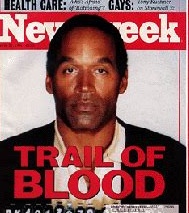


 Győző Istóczy
Győző Istóczy Cécile Tormay
Cécile Tormay
 Not women: male perverts on a lesbian dating-site
Not women: male perverts on a lesbian dating-site Not a woman but a violent male narcissist: a smirking transwoman threatens real women
Not a woman but a violent male narcissist: a smirking transwoman threatens real women Not White, not Western: some unelected non-White leaders of the White British Isles (happily, Leo Varadker is no longer Taoiseach of Ireland)
Not White, not Western: some unelected non-White leaders of the White British Isles (happily, Leo Varadker is no longer Taoiseach of Ireland)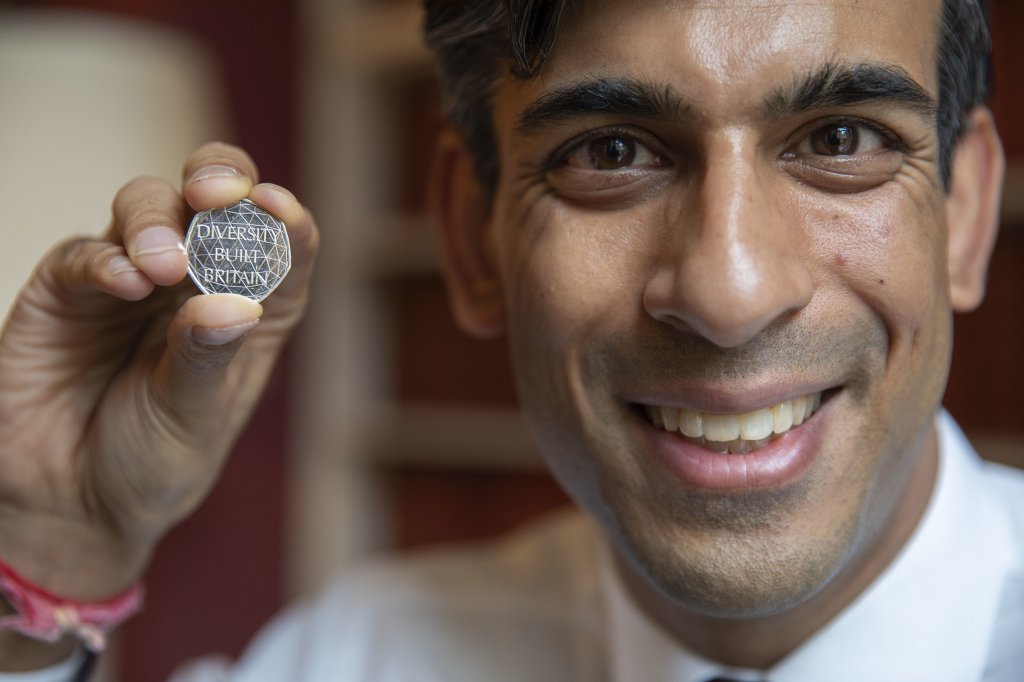 Not White and not Western: the geeky Hindu Indian Rishi Sunak promotes the lying clown-cult of trans-Westernism
Not White and not Western: the geeky Hindu Indian Rishi Sunak promotes the lying clown-cult of trans-Westernism Trans-Westernism in action: Black fake Westerners are superior to real White Westerners
Trans-Westernism in action: Black fake Westerners are superior to real White Westerners Westerner and trans-Westerner: Keith Woods with the devious and dishonest Arab-“American” Richard Hanania (compare Tricky Dicky with
Westerner and trans-Westerner: Keith Woods with the devious and dishonest Arab-“American” Richard Hanania (compare Tricky Dicky with  Twerk macht frei: the trans-Western Adele Okojie-Aidonojie
Twerk macht frei: the trans-Western Adele Okojie-Aidonojie
